When trying to grow mushrooms, choosing a substrate is an important decision. A mushroom substrate is simply any substance on which mycelium will grow.
Mycelium, a thread-like collection of cells that is the vegetative growth of a fungus, is to a mushroom-like an apple tree is to an apple. You need to have one as the base for producing the other.
Many different materials may be considered a substrate. From logs to straw to coffee grounds, you always have a variety of cultivation choices.
A substrate is inoculated with mycelium through the use of mushroom spawn. Spawn is just a smaller amount of a nutritious material upon which the mycelium can begin to grow before it’s ready to colonize a substrate. For more information on mushroom spawn see this page.
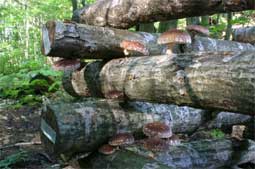
The rest of this article goes into more depth on substrates. We’ll cover some of the more common materials, including advantages and disadvantages. Then we’ll look at which one is right for your project. Once you understand the purpose and use of substrates, you’ll be able to grow mushrooms with greater success.
Types of Mushroom Substrates
Below are some examples of substrates, various materials on which one can grow mushrooms. This list is by no means exhaustive!
Straw
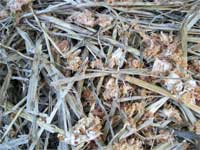
Cereal straws such as wheat, rye, and oat all make a good base for mushroom growth. They’re easy to get and fairly cheap. I buy mine in large bales from a local feed store.
A big advantage of straw is that it can be used to grow many different types of mushrooms. Most mushrooms have no problem breaking down the plant fibers of straw, making it a versatile substrate.
A disadvantage of straw is that it should be prepared first, especially if you’re growing mushrooms indoors. Straw is laden with other microbes, and if you don’t get rid of those tiny competitors the mushroom mycelium may not have a chance to grow.
Straw is treated by a variety of methods, usually heat pasteurization. See this article for more info on how to pasteurize straw.
Logs
One can grow mushrooms on logs with great success. The log is cut, inoculated with dowel spawn, and left to incubate. When using logs, you must take into account the type of wood and when the log was cut.
It’s best to choose the same type of wood that your desired mushroom grows on in nature. Do some research on the mushroom that you’re planning to grow. It will save you a lot of time and heartache in the end.
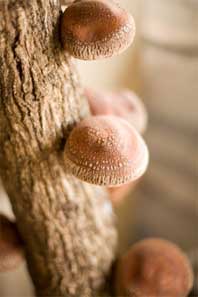
However, often any quickly decomposing hardwood that’s not too dense will do. Elm, beech, alder, ash, and cottonwood are all good choices. Thicker hardwoods, such as oak, will take much longer to produce mushrooms.
Cut your logs in the late winter to early spring. Make sure they’re healthy, with no signs of decay, rot, or previous fungal growth. There’s no standard length that they have to be, but I usually like to make mine just a few feet long for ease of storage and handling.
What are the advantages of using logs? Certain types of mushrooms prefer wood to straw, and thus grow much better on logs. A log may also produce mushrooms for years, as opposed to just a few flushes when using straw.
The biggest disadvantage here is time. It takes a while for mycelium to colonize a log and start fruiting, often a year or longer. I urge you, however, to be patient! Watching your logs burst with mushrooms is immensely satisfying when it finally happens.
Enriched Sawdust
Enriched sawdust is a mushroom substrate more commonly seen with commercial rather than home cultivators. Although it works quite well with a variety of different mushrooms, there are a few factors to consider.
To begin, one must think about the type of wood and the creation of the sawdust. The same rules apply as do for logs, meaning hardwoods are best. Once you choose your wood, it’s up to you to either have the equipment to turn it into sawdust yourself or find somewhere that sells it. Note that the resulting dust shouldn’t be too fine, as it will pack too densely and the mycelium won’t get the air it needs.
Another consideration is that sawdust itself is often not nutritious enough. It needs to be enriched with a nitrogen supplement such as bran. Doing this will yield many more mushrooms than using plain sawdust alone.
A final concern is that, due to possible microscopic competitors, sawdust should be sterilized before use. This requires some sort of equipment such as an autoclave.
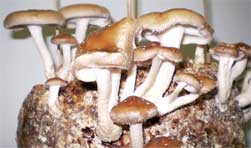
Being just a home cultivator, I’ve never grown mushrooms on enriched sawdust from scratch. If you’re interested in this method, I refer you to Paul Stamets’ excellent book Growing Gourmet and Medicinal Mushrooms. This book has all the instructions to get you started with sawdust.
Do note that many mushroom growing kits are simply blocks of enriched sawdust themselves. If you’re a beginner who’s just learning how to grow mushrooms, these kits are a great way to get started (see pic above). Someone else has done all the sawdust prep for you!
Grow Mushrooms on Other Substrates
You can grow mushrooms on many, many more materials than just straw, logs, and sawdust. Below are a few other effective substrates:
- Stumps
- Compost
- Paper/paper products (make sure any inks used were non-toxic)
- Cardboard (again, only if non-toxic dyes were used)
- Used coffee grounds (organic)
- Used tea leaves (organic)
- Gardening debris
- Other organic materials such as seed shells, corncobs, and banana fronds. Use your imagination and experiment!
The Best Mushroom Substrate
So which type of substrate is best for your project? Much like when choosing spawn, the answer depends on what you’re doing.
A general rule of thumb is to match your spawn to your substrate. For example, if you want to grow mushrooms on logs, a wood-based spawn such as plugs or sawdust is best. The theory is that since the mycelium is already familiar with the spawn material, colonization time will be reduced if the spawn and substrate are similar.
You also need to take into account the types of mushrooms that you want to grow. Some mushrooms, such as reishi, maitake, and lion’s mane, prefer a wood-based substrate. Others, such as oysters, will thrive on almost anything.
Below lists which substrates are best for which spawn. This is just a general guideline, as nothing is set in stone.
- Sawdust – Wood-based substrates such as logs, wood chips, enriched sawdust, and cardboard. Also good for outdoor straw beds.
- Grain – Indoor bags of pasteurized straw and enriched sawdust
- Plug/Dowel – Logs and wood chips
Two final points to take into account are your time and budget. Maybe you don’t have the time to mess around with logs or pasteurize straw. Perhaps you don’t have the money to purchase a lot of extra materials.
Don’t fret! There’s a mushroom growing solution for you. A little ingenuity can take a project a long way.
If you just want to grow mushrooms without a lot of extra work, look into purchasing mushroom growing kits. These pre-made blocks of mixed substrate and spawn are a great way to grow some fungal treats with little effort.
If money is a limiting factor, know that you can use many different types of materials as a substrate. Look around your house and property. You may have some logs or stumps that you can use for free. You can also save your tea leaves and coffee grounds as mushroom growing material.
Or is your house like mine, where you have a mountain of cardboard recycling so large that tourists show up to try and climb it? Use that cardboard to grow mushrooms and save yourself a trip to the recycling center!
So get your substrate in order and start growing some mushrooms. As always, feel free to tell me about it. 🙂

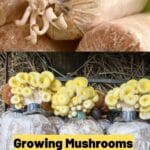

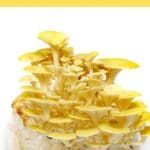

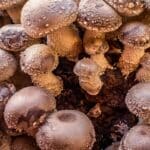
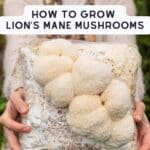
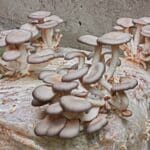
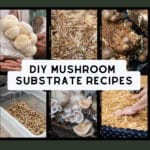
Leave a Reply